#artist is lucas signorelli
Text
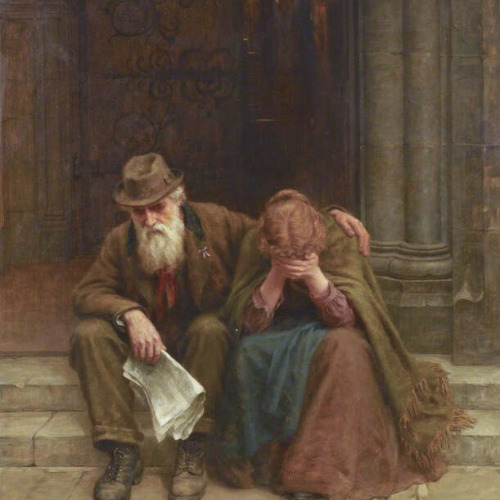





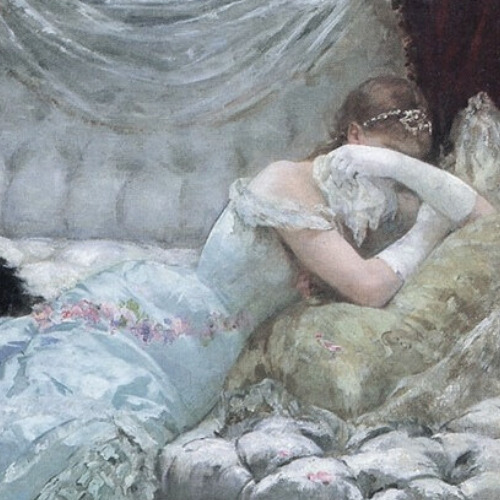

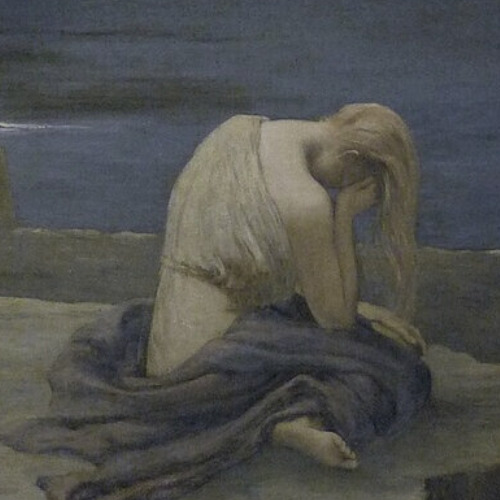

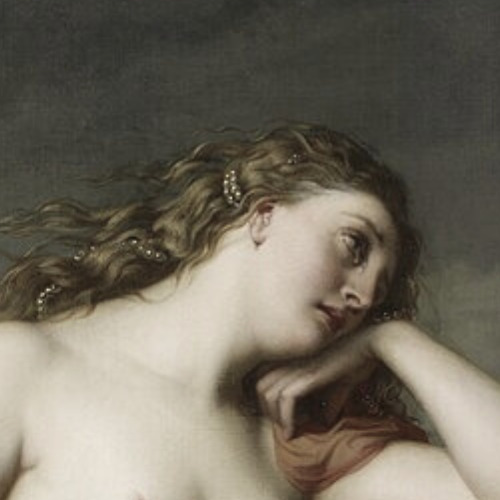

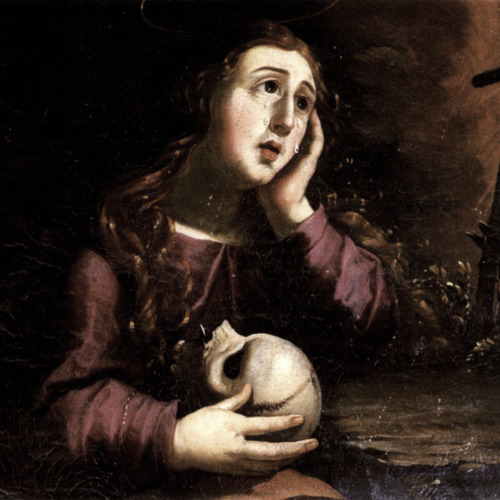




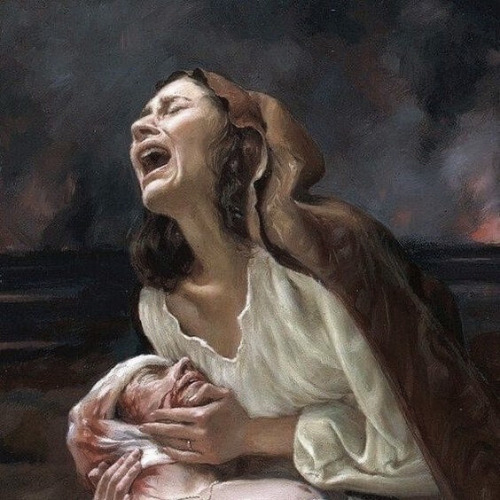

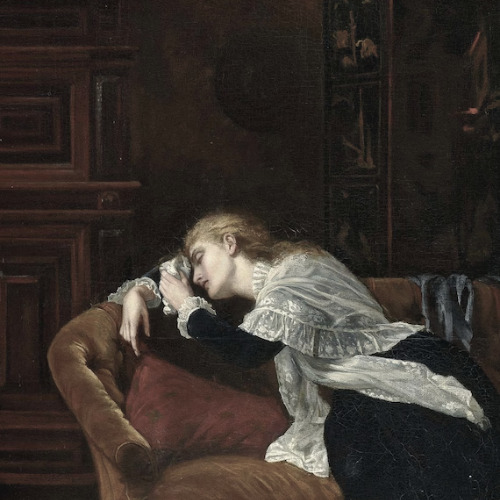

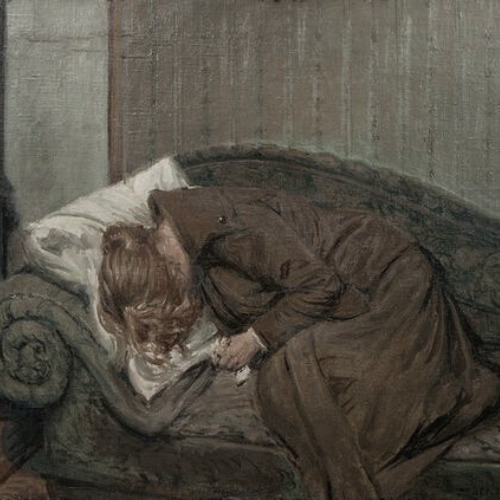



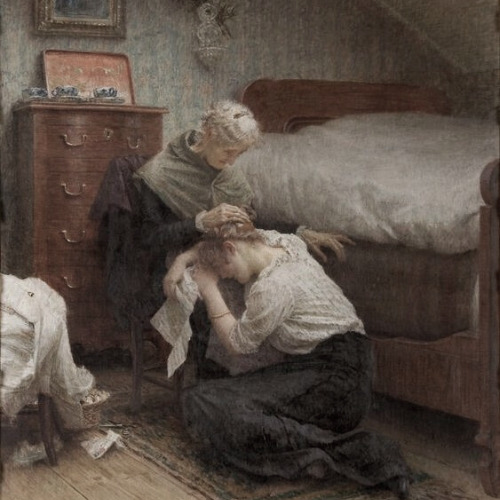



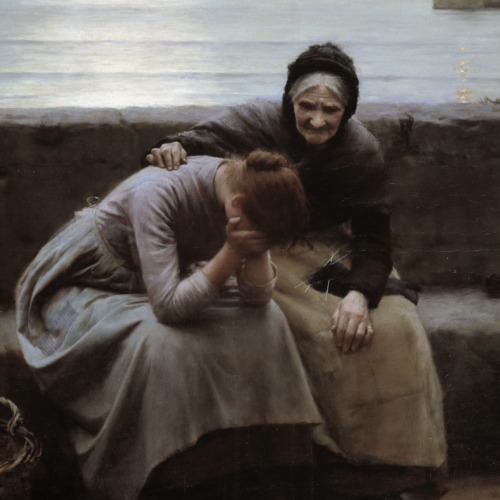
"Crying doesn't mean we're weak, it means we're human"
#artist is louisa starr canizani#artist is jacob jordaens#artist is stanislaw bohusz-siestrzecewicz#artist is chase william merritt#artist is charles cottet#artist is antonio ciseri#artist is henri gervex#artist is simon marmion#artist is henry daras#artist is joseph heintz#artist is henri lehmann#artist is unknown#artist is josefa de obdios#artist is lucas signorelli#artist is rembrandt#artist is john everett millais#artist is karl bryullov#artist is max ginsburg#artist is frederick william elwell#artist is walter william outless#artist is pietro antonio rotari#artist is peder knudsen#artist is jean beraud#artist is heinrich lossow#artist is carl rudolph sohn#artist is vlaho bukovac#artist is antonio piatti-#artist is unknown-#-artist is karl bryullov#artist is walter langley
431 notes
·
View notes
Text

Resurrection of Flesh, from Last Judgment fresco cycle
Artist: Luca Signorelli
0 notes
Text
Gipsy Fiorucci - Fuori il suggestivo videoclip del nuovo singolo “Il Pianto Che Trattengo”
Girato nella maestosa Pinacoteca di Città Di Castello in Umbria tra arte, storia e sacralità

La cantautrice umbra Gipsy Fiorucci torna protagonista con il suggestivo video de “Il Pianto Che Trattengo”, singolo già in radio e disponibile in tutte le piattaforme digitali (distribuzione Artist First).
Il videoclip realizzato in collaborazione con la casa di produzione cinematografica “Whiterose Pictures”, regia di Lorenzo Lombardi, direttore alla fotografia Nicola Santi Amantini, è un autentico viaggio tra i meandri dell’anima; i giardini maestosi che circondano il Palazzo Rinascimentale fungono da sfondo misterioso trasformandosi in una sorta di labirinto ancestrale in cui perdersi, per poi ritrovare la propria identità e abbracciare la totalità del proprio essere in tutte le più intime sfumature. Tra gli oggetti più rappresentativi del video possiamo ammirare il “cuore d’oro” all’interno di una teca di cristallo, centro vitale di tutto il nostro essere, la nostra fede divina, metafora del piombo che diventa oro, quando avviene in noi la trasmutazione delle nostre sofferenze e ferite interiori che si trasformano nei nostri più grandi doni e talenti.
“Per le riprese del video, progetto patrocinato dal comune di Città Di Castello, ho scelto il maestoso Palazzo Vitelli alla Cannoniera, maggior contenitore d’arte dell’Umbria assieme alla Galleria nazionale di Perugia, in quanto luogo intriso di storia, arte, cultura e sacralità; nelle sale al suo interno si trovano importanti esempi di pittura rinascimentale, tra cui alcuni tra i primissimi lavori di Raffaello Sanzio e Luca Signorelli ed è stato un grande onore poter esprimere la mia creatività e volteggiare nelle meravigliose sale del Palazzo circondata da così tanta bellezza e sontuosità.”
Gipsy Fiorucci
Guarda il videoclip
youtube
L’artista, che nel video incarna un’autentica Regina della Trasmutazione, indossa un prezioso copricapo viola proprio come il colore stesso della metamorfosi, della purificazione e della spiritualità. Un pianto non solo liberatorio, ma che riesce a identificarci a tal punto da diventarne un tutt’uno, perché finalmente lo riconosciamo e lo accettiamo per la sua verità: un percorso introspettivo, mistico, a tratti disarmante, fatto di chiaroscuri che si alternano in un’eclissi dell’anima, in cui la luce incontra e si fonde con il buio, ad indicare la nostra parte ombra fatta di paure e sofferenze che si integra perfettamente con il frammento luminoso e puro che vive dentro di noi. Allo stesso tempo, la salita in ginocchio nei gradini della scalinata simboleggia le fatiche e i tormenti di una vita per realizzare i propri sogni e trovare la propria strada; le stesse scale che poi diventano rifugio, letto e croce di un tragitto non sempre facile da attraversare.
Immagini che vanno a sottolineare la piena ricerca dell’io consapevole della propria autenticità, il “cuore d’oro” appunto, che diventa il nostro più grande alleato e la salvezza della nostra anima. Un passaggio catartico fondamentale in cui, dalle profondità più buie e nascoste, arriviamo alla pura luminosità della nostra anima quando, dopo un lungo e arduo lavoro nell’adito del nostro essere, troviamo finalmente il “cuore d’oro”.
La meravigliosa Pinacoteca Comunale funge così da cornice perfetta nel videoclip della cantautrice tifernate, impreziosita al suo interno, da affreschi e quadri in stile rinascimentale e manierista, che sembrano scrutarla dall’alto, seguirla con lo sguardo quasi a volerle fare compagnia in questa solitudine durante l’ascesa nei meandri più profondi della sua anima. Immagini evocative che si muovono tra misticismo e spiritualità alla ricerca di ciò che conta davvero nella nostra esistenza: la connessione con il nostro frammento Divino per esprimere la nostra verità interiore e vivere nell’autenticità.
Web Site: www.gipsyfiorucci.com
Facebook: https://www.facebook.com/Gipsyofficial/
Instagram: https://www.instagram.com/gipsyfiorucci_official/
TikTok: https://www.tiktok.com/@gipsyfiorucciofficial?_t=8hMSPpdYSxd&_r=1Spotify: https://open.spotify.com/intl-it/track/4t7vpt9yYDHDci9l3ixvRt?si=c06ce46a5e71428c
0 notes
Text
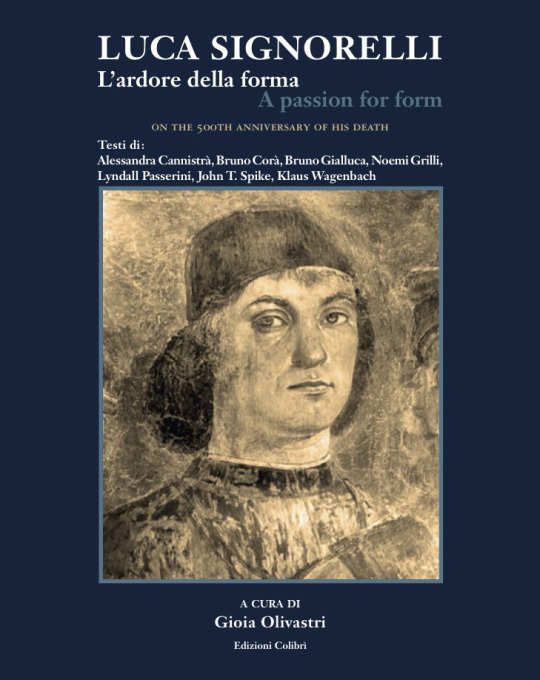
11 Maggio 2023 è arrivato nelle librerie il volume Luca Signorelli e l'ardore della forma. Testo dedicato al Maestro cortonese per il 500° anniversario dalla morte.
L' Associazione Amici della Chiesa di San Francesco a Cortona vuole essere presente alla ricorrenza con questo volume.
Luca Signorelli – L’ardore della forma è un libro dal progetto editoriale particolare che propone testi di autori diversi, riguardanti soltanto alcuni aspetti dell’importante opera e della vita del sommo artista.
Il criterio con cui ho scelto il concept del testo sta semplicemente nell’ammirazione per chi ha scritto. Nel libro viene approfondito il periodo delle commissioni nel territorio umbro, senese e cortonese sul quale mi sono confrontata con autori a cui ho poi chiesto di scrivere un testo su uno specifico argomento “signorelliano”.
Prof. Bruno Corà, storico dell’arte - Presidente della Fondazione Burri di Città di Castello.
Dr. Alessandra Cannistrà. curatore del Museo MODO - Museo dell’Opera del Duomo di Orvieto.
Dr.ssa Noemi Grilli, Responsabile dell'Archivio dell'Opera del Duomo di Orvieto.
Klaus Wagenback, giornalista e editore berlinese.
Bruno Gialluca, studioso dell’antiquaria dei secoli XVI e del XVII
Prof. John T. Spike, studioso e critico d’arte del periodo rinascimentale e barocco.
Lyndall Passerini, scrittrice e giornalista.
Integra l’opera una sezione dedicata alle opere di Signorelli esposte in Cortona, illustrata da una cartina che segnala i vari luoghi, musei e chiese.
Il libro si conclude con un riassunto delle attività dell’Associazione Amici della Chiesa di san Francesco a Cortona, sostenute per l’anno 2021-22: indagini riguardanti l’ubicazione dell’Oratorio dei Laudesi.
Gioia Olivastri
Vision forecaster, consulente per progetti inerenti alle arti visive. Responsabile italiana, curatrice e coordinatrice dell’Associazione Amici della Chiesa di San Francesco a Cortona.
Vive e lavora tra Cortona e Milano.
29 euro
Luca Signorelli – A passion for form is a special publishing project that offers articles from different authors who focus on some aspects of the life and work of the great artist.
My sole criterion for selecting authors was my admiration for what they wrote.
The book covers Signorelli’s works in the Umbria, Siena and Cortona regions and I selected and chose texts from authors who wrote for me about a specific theme of the work of Signorelli.
Prof. Bruno Corà, art historian – President of the Burri Foundation of the Città di Castello.
Dr. Alessandra Cannistrà. Curator of Museum MODO Opera del Duomo di Orvieto.
Dr. Noemi Grilli, Head of the archive of the Opera del Duomo in Orvieto
Klaus Wagenbach, journalist and publisher from Berlin.
Bruno Gialluca, research specialist of the 16th and 17th centuries.
Prof. John T. Spike, researcher and art critic of the Renaissance and Baroque eras.
Lyndall Passerini, writer and journalist.
The book includes a section dedicated to the works of Signorelli that are on view in the town of Cortotna, including an illustrated map that shows the various museums, churches and other places.
The book concludes with a summary of the work of the Friends of the Church of San Francesco in Cortona during the period 2021-22: the investigation into the location of the Oratorio of the Laudesi.
Gioia Olivastri
Vision forecaster, consultant for projects relating to visual art. Italian head, curator and coordinator of the Friends of the Church of San Francesco in Cortona.
Gioia lives and works in Cortona and Milan.
LUCA SIGNORELLI
L’ardore della forma
A passion for form
on the 500th anniversary of his death
TESTI DI
Alessandra Cannistrà, Bruno Corà, Bruno Gialluca, Noemi Grilli,
Lyndall Passerini, John T. Spike, Klaus Wagenbach
A CURA DI Gioia Olivastri
0 notes
Text
Dichotomies do not exist to Na Kamura, and style and time are fluid. Seeing herself “as both a traditionalist and as a painter of the twenty-first century”, for the new works on view, the artist pulls structure from as diverse sources as the paintings by Italian Renaissance master Luca Signorelli and the choreographed gestures of contemporary K-pop dancers. She is communicating with the art of the past and with the viewer in the present: “As long as I produce pictures that are seen, they remain communicative. They’re open.”
Maki Na Kamura (b. Osaka) studied at the Kunstakademie Düsseldorf. She has been included in numerous solo and group exhibitions across Europe and in Japan. Solo museum exhibitions have been held at Museum Dhondt-Dhaenens in Deurle, Belgium (2017); Osthaus Museum Hagen in Hagen, Germany (2017); Bilbao Arte – centro de arte contemporáneo in Bilbao, Spain (2015); and Oldenburger Kunstverein in Oldenberg, Germany (2014). Na Kamura was awarded the Falkenrot Prize in 2013. Her work is in the collection of Musée d’Art Moderne de la Ville de Paris, France. Na Kamura lives and works in Berlin.
0 notes
Photo
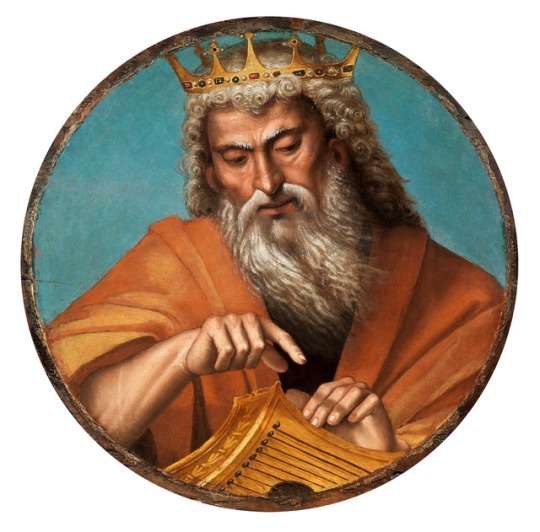
KING DAVID LUCA SIGNORELLI (After 1441 - Cortona - 1523)
41 notes
·
View notes
Photo
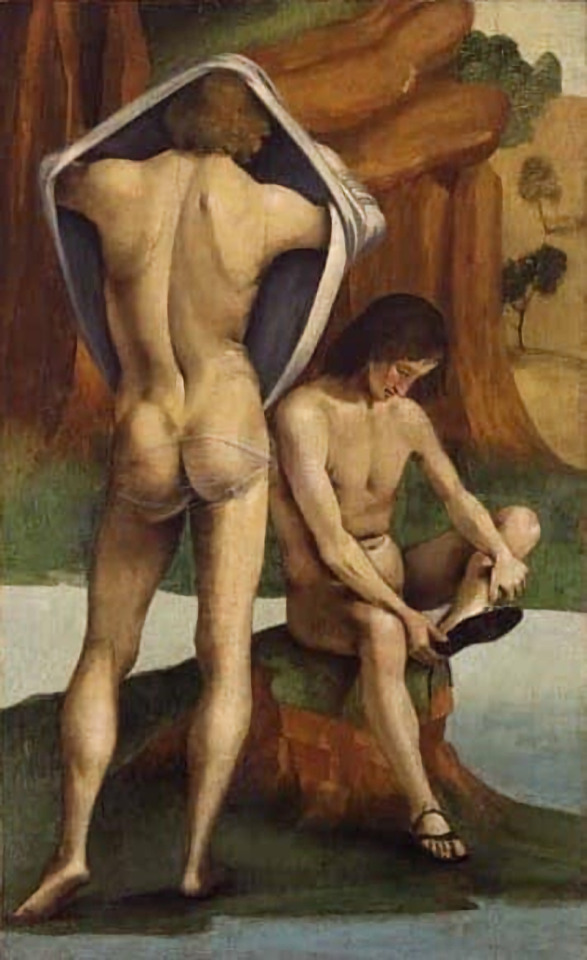
Artist: Luca Signorelli (1441 - 1523)
9 notes
·
View notes
Photo

Holy Family (c.1487-1488). Luca Signorelli (Italian, c.1445-1523). Oil on wood. The Uffizi.
The Virgin, characterized by a pearly complexion and wide red tunic, is intent on reading a book, while Christ turns his gaze to St. Joseph. The three subjects in their monumentality occupy the whole painted space; on the background, we can see a barely defined desert or country landscape and some figures heading towards the fortifications. The Holy Family represents one of the apexes of Signorelli's career, marking the achievement of his artistic maturity. In the hands of Saint Joseph and in the profile of the Child. Additionally, the tender face of Mary and the human gaze of Joseph reveal the innovations which characterize the fundamental stylistic production of the painter.
11 notes
·
View notes
Text
Random AU #4
Sanders Sides as Renaissance Artists (suggested by @ladyartemisia28)
Logan: Jean Fouquet
Patton: Fra Angelico
Roman: Tiziano Vecellio
Remus: Pieter Bruegel the Elder
Virgil: Luca Signorelli
Janus: Sandro Botticelli
#logan#patton#roman#remus#virgil#janus#logan sanders#patton sanders#roman sanders#remus sanders#virgil sanders#janus sanders#sanders sides#random au#renaissance au
7 notes
·
View notes
Text
The Sistine Ceiling

Within the vast complex of Vatican City, which is an independent city-state with its own governing body as well as the seat of the Pope in the Roman Catholic faith, is the famed Sistine Chapel (also known as the Venue of the Papal Conclave). The chapel is named after Pope Sixtus IV, who commissioned its restoration in the late 15th century. Originally, it was defined as the chapel of the Vatican fort, known as Cappella Magna. The chapel serves various important functions, from celebrating papal acts to ceremonies of the Catholic rite, but its major religious role is that of the site where cardinals meet to elect the next pope. The building where the Sistine chapel is located of the building very close to St. Peter’s Basilica and the Belvedere Courtyard in the Vatican.
The Sistine Chapel is also the home of 2 magnificent frescoes painted by the famed Michelangelo, the Sistine Ceiling (as it is known by) and later, The Last Judgement. There are also works from other notable Renaissance artists, from the likes of Sandro Botticelli, Pietro Perugino, Pinturicchio, Domenico Ghirlandaio, Cosimo Rosselli, and Luca Signorelli.
The ceiling of the Sistine Chapel was originally painted blue and covered with golden stars (think of the ceiling of Sainte-Chapelle's lower chapel). In 1508, Pope Julius II (1503-1513) commissioned Michelangelo to paint the ceiling of the chapel, instead of leaving it as it was. The pope wanted the ceiling done in a " geometric ornament with the 12 apostles placed on spandrels around the decoration". However, Michelangelo suggested that instead of doing ornamentation, he would do a painting of scenes from the Old Testament. Although, at the time, Michelangelo had been known more for his work in sculpture (as he had recently completed his famous sculpture of the Pietá as well as his statue of David, both of which reside in the Vatican) rather than painting. But, never one to be daunted, Michelangelo rose to the challenge and went on to create one of the most famous fresco masterpieces in Western art!
𐰸 Rendering of the Sistine chapel before Michelangelo worked his magic on it 𐰸

The ceiling of the chapel is made up of 33 separate areas, each space containing a different scene. Each scene is divided using a technique called trompe-l'oeil (visual deception, especially in paintings, in which objects are rendered in extremely fine detail emphasizing the illusion of tactile and spatial qualities), giving the impression that each painting is divided by physical molding within the vault. They are painted in monochromatic colors, creating a spatial effect between each panel. In the center of the ceiling is a series of nine narrative paintings, depicting scenes from the book of Genesis. There are five smaller scenes, each framed and supported by four naked youths or Ignudi. The scenes start with the Creation of the World (Gen. 1) and end with Noah and the Flood (Gen 6:9).
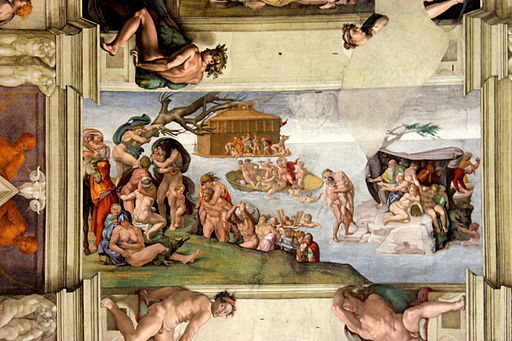
The subject matter was, more than likely, laid out with the help of a cleric from the Vatican (and seeing how this was the home of the pope, he wanted to be sure to get it right!) The entire project took Michelangelo 4 years to complete and took a grave toll on his health. He penned this poem, describing how his work was taxing both his body and mind:
I've grown a goiter by dwelling in this den– As cats from stagnant streams in Lombardy, Or in what other land they hap to be– Which drives the belly close beneath the chin:
My beard turns up to heaven; my nape falls in, Fixed on my spine: my breast-bone visibly Grows like a harp: a rich embroidery Bedews my face from brush-drops thick and thin.
My loins into my paunch like levers grind: My buttock like a crupper bears my weight; My feet unguided wander to and fro;
In front my skin grows loose and long; behind, By bending it becomes more taut and strait; Crosswise I strain me like a Syrian bow: Whence false and quaint, I know, Must be the fruit of squinting brain and eye;
For ill can aim the gun that bends awry. Come then, Giovanni, try To succor my dead pictures and my fame; Since foul I fare and painting is my shame.
The main theme of the frescoes is that of the connection between humans and God, and nowhere is this more evident than in the panel, The Creation of Adam. We are given a breathtaking vision of the spirit of God embodied as a human form, reaching across the heavens, just out of reach of Adam, who lazily reclines on a barren earth. This contact point has previously been described as a spark or current, an electrical metaphor which would be unknown to those in the sixteenth century. Nonetheless, it seems quite a fitting description, considering that the lifeblood which is about to flow into the awaiting Adam is similar to the flow of electric current produced when a wire is connected to a power source. In this case, the power source being God. This particular piece is world-famous and has been reproduced hundreds of thousands of times. And we can see why. It is such a powerful image.

At either end of the ceiling, and beneath the scenes are Prophets and Sibyls (a female prophet or witch, a nod to the pagan beginnings of religion) seated on grandiose thrones that alternate along the long sides, while the shorter sides are taken over by the figures of Zechariah and Jonah (situated above the altar) who has a distinguished position in so much as he is the adumbration of Christ. The crescent-shaped areas, or lunettes, above each of the chapel windows are tablets listing the forerunners of Christ and their accompanying figures. Above them, in the spandrels (the space between the shoulders of adjoining arches and the ceiling or molding above), eight groups of figures are displayed (however, they have not been identified with specific biblical characters). The entire narrative is finished off by four large corner pendentives (a curved triangle of vaulting formed by the intersection of a dome with its supporting arches) each one portraying a dramatic Biblical story. All of this illustrates the connections to Christ, before and after His birth and death, which are embodied in these paintings.
𐰸 map of the architectural features of the Sistine Ceiling 𐰸

𐰸 Guide to the artwork on Sistine Ceiling 𐰸
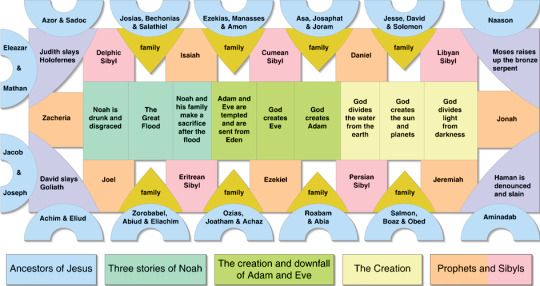
In 1510, Michelangelo decided that he needed a well-deserved break from this arduous assignment. Upon his return a year later, his style of painting had undergone a noticeable change. Rather than jumbled and multiple images within a scene, as previously done, Michelangelo had decided to minimise details and focus on essential figures, but on a grand scale. Also, he added a strong sense of emotion to the figures as well as dramatic gestures (as in The Creation of Adam). This would enable the viewer on the floor below to have a clear understanding of exactly what the scene was trying to convey. Further, when we look at the commanding figure of God in three of the frescoes, it clearly illustrates the separation of darkness from light, the creation of the heavens and the earth, all radiating its power through God's body.
The influence of these works cannot be emphasized enough. The complexity of design in the individual figures display Michelangelo’s skill in creating a variety of poses for the human figure. His stupendous works have turned the Sistine Chapel into a veritable academy for future artists!

#Sistine Ceiling#Sistine chapel#Michelangelo#The Vatican#Renaissance Art#epic artwork#religious art#Italy#Rome#Vatican#religious artwork#famous artwork#art history#Biblical art#Europe#historic Italian artwork#historic artwork#symbolism#God#visual arts#Italian Renaissance#frescoes#Christ#Sistine Chapel Ceiling#Noah and the Flood#Gallery of Sistine Chapel#High Renaissance art#papal conclave#The Creation of Adam#doctrine of humanity
25 notes
·
View notes
Text
The Man of Sorrows
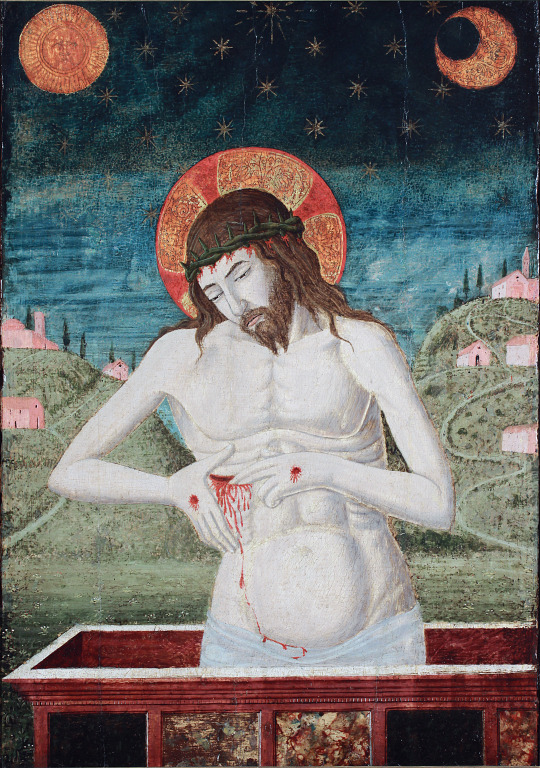
Christ Standing in the Tomb (also known as The Blood of the Redeemer) is a small devotional piece that fuses features often associated with the International Gothic with those more characteristic of early Renaissance form. Now hanging in the Tweed Museum of Art at the University of Minnesota Duluth, the painting, and the anonymous artist who executed it, defy categorization. The painting exemplifies the richly varied art being produced in the Marche region of Italy during the fifteenth century.
The anonymous artist seems deliberately to have combined formal elements associated with very distinct art historical traditions. Currently dated generally to the Quattrocento, formal elements suggest that the artist was working during the second-half of the century and was familiar with Piero della Francesca’s careful perspectival constructions and color palette. While aspects of the painting seem to depend upon Renaissance innovation other sections, particularly the upper two-thirds of the panel, echo the later Medieval artistic elements favored by Francesco di Gentile.
The fusion of Medieval and Renaissance formal characteristics evident in Christ Standing in the Tomb has led to a number of problematic attributions. Initially attributed to Liberale da Verona (c.1445-1526/29) further study, as well as the removal of discolored varnish during conservation in 1986, rendered such an attribution implausible. Liberale da Verona’s paintings and manuscript illuminations—which are praised for their ‘vitality’ and ‘richness’— betray a greater openness to later fifteenth-century artistic development. Liberale da Verona’s work seems more in tune with the dramatic intensity of Luca Signorelli than the calm, serenity of Piero della Francesco’s work.
The artist of this panel abandoned narrative drama for emotional intensity in the rendering of this “Man of Sorrows”, a formal painting type popular in the Marche, the Veneto and Umbria, and which emerged from the popularity of the ‘Holy Face’ in Northern Europe. These pseudo-portraits of Christ could be adapted to include accompanying figures, were often small in scale, making them ideal as devotional pieces because, as Sixten Ringbom explains, “they are essentially symbolic representations expressing mysteries of faith, pictorial renderings of concepts such as the Suffering Christ, the Triumphant Savior…”. (p.57). This expression of the faith also made them, according to Jacob Burckhardt, ideal wedding presents.
References: Ringbom, S. Icon to Narrative: The Rise of the Dramatic Close-Up in Fifteenth-Century Devotional Painting. Doornspijk: Davaco, 1984; Christiansen, K. et. al. eds. Painting in Renaissance Siena, 1420-1500. New York, Metropolitan Museum of Art, 1988.; Zampetti, P. Paintings from the Marches: Gentile to Raphael. London: Phaidon Press Ltd., 1971.
Image credit: Christ Standing in the Tomb (Blood of the Redeemer), (15th century); tempera on panel, 25 5/8" x 17 1/8". Tweed Museum of Art, University of Minnesota Duluth.
Further reading: Catherine R. Puglisi and William L. Barcham, eds. New Perspectives on the Man of Sorrows. Kalamazoo MI: Medieval Institute Publications, 2013; Enza Carli, The Miniatures of Liberale Da Verona from the Antiphonaries in Siena Cathedral. Siena: Aldo Martello Editore, 1960.
Posted by: Jennifer D. Webb
#long post#quattrocento#Italian art#painting#man of sorrows#marche#liberale da verona#tweed museum of art#duluth#art history
21 notes
·
View notes
Photo

Flagellation (detail)
Luca Signorelli made this tempera-on-panel painting around 1485 for the confraternity of the Raccomandati at Santa Maria del Mercato in Fabriano, a religious brotherhood whose members were known for practicing self-flagellation. Whatever the artist intended, or his patrons perceived back then, it’s hard for modern eyes to ignore the erotic gay energy. “Called by one critic ‘the master of the buttocks,’ Signorelli lavishes attention on the contours and textures of the male body—in particular, its muscles, skin, and hair,” scholar John G. Champagne observes:
What is disturbing about the flagellation scene portrayed in the Brera standard is its allure. Like all forms of sexuality, masochism is coded; Signorelli’s scene has all the marks of an S/M scenario, from the highly theatricalized poses of the torturers to the fetish-wear of the loincloths on both Christ and his torturers to the fully-dressed figures watching the scene unfold to the proscenium arch that frames the action as theater. We are presented the male bodies via a gaze loving in its attentiveness.
The full painting and its companion piece, a nursing madonna, can be viewed at the Brera Museum’s website.
5 notes
·
View notes
Photo

Luca Signorelli deeds of AntiChrist Orvieto cathederal.
When you first view this picture it looks like in the right foreground there is a figure of Christ with the figure of Satan wispering in his ear and his arm in His robes. Then you realize it is the Antichrist not Jesus. Could the artist have been saying that if we can be easily deceived by a few strokes of the brush, how vulnerable are we to the power of the senses? Couldn’t a flesh-and blood Antichrist far more effectively create the appeareance of goodness, while hiding his attachments to evil?
Thoughts from the Apocalypse novil Father Elijah by Michael O’brian
0 notes
Text
Rome
What was interesting with where we were in Rome was that a lot of locals spoke English. Most cities are like this. We had a Counselor that said all major cities usually speak English, and the authentic places are in the villages. She was right. I tried to speak Italian after all my lessons to our waiter, and he felt uncomfortable that I wasn't very fluent and asked me to speak English! They also get offended when you ask for extra salt, or ketchup, anything that changes the dish. They think you're insulting their food.
The food is amazing. Veal, rabbit, pasta, melon con prosciutto, and bruschetta. The wine is excellent. Anything sweet is excellent. I found my favorite wine was from Piedmonti called Gavi di Gavi. Which is in the North. My favorite restaurant in Campo De Fiori is a chain! This wine and cheese bar called Obica. Which is in New York and LA. Our apartment was walking distance from the Colosseum. It was far from school. I always had to take the bus. Which was honesty policy when it came to payment. So people didn't really pay. When the cops came to check we would just jump off. That's why there were transportation strikes in Rome all the time. The honesty policy system did not work.
It took me forever to get to know my area where my apartment was because I always stayed with my friend who lived near Piazza Navona. Which had this amazing fountain of the four major rivers and their Gods. A Brazilian consulate, the best gelato, and our school. My friend and I would go running. One time, since we don't really have phones, and you have to pay per call, we ran to each other's houses without knowing it. I got lost and I finally got to her house and her roommate said she was running to see me.
We connected with people through facebook and if we set a time we would meet there. If we weren't there we would wait. It was awesome not having a phone. I had my camera, my journal, and some food vouchers. Our program was awesome because rent was paid for as well as food vouchers to restaurants and the only thing I had to worry about was travel. My dad sent me $150 a week from what I saved over the summer, and that's how I lived.
In Rome, I felt like I didn't really have any money, and I felt like I had too much free time. So I had journals and photos and eventually started taking videos. I set intentions. I wanted a tattoo of my mother's signature. It was a card she gave to my father "Happy 3 month anniversary" in 1985. Finding that was really special to me and I brought it with me to Italy to get the tattoo. I wanted to learn Italian, speak to people. Make friends. I decided to do a video project. For Italy, and film everything I was experiencing.
I focused and did really well in school. Watch Italian films and got a real Italian education, or as close as you can going to an American school in Rome. My last intention was to see all that Italy has to offer. People in my program went all over Europe. Spain, Morocco, France, and Croatia. I couldn't afford trips like that, so I backpacked every weekend with my friend from New York and my other friend from LA, and went to the beaches or villages and saw Italy.
My classes included Italian, Philosophy, Art History, and my favorite History of Italian Cinema. Art History was amazing because every class was at the actual site. It was included in the program so we learned about Michel Angelo and then went to the Vatican to see the Sistine Chapel. Dates were the hardest to remember. We also saw this amazing Duomo and the art in Orvietto. We learned about Luca Signorelli and his painting called The Last Judgement. When hell comes on earth and takes everyone who was a sinner. Basically the end of the world. It's graphic and disturbing. I carved my initials with a permanent marker at the bottom of one of the paintings. Orvietto was my favorite because it was a place I could speak to people in Italian, since people didn't know English.
One time we brought our friends' parents and we were famished for lunch during Siesta. All the restaurants were closed but this little old lady went inside and cooked us a meal from scratch. I had pasta fagioli, which is my absolute favorite. My friend’s parents asked for ice for their white wine, which is uncommon in Italy. She had to make it from scratch and by the time it was ready, we finished all the wine.
We had amazing day trips. Our trip to Napoli we saw Pompeii, Mt Vesuvius, and the Island of Capri. They make the best limoncello in Capri. You see all the people who were preserved from the volcano eruption in Pompeii. As well as the brothels there. We did a day trip on our own when everyone went to Oktober fest to Sperlonga. We rented a pedal boat with a slide. Went swimming topless. Had a freak out because we realized we left our passports and all our money at the beach and nobody was watching it. We had fresh fish. Felt like we got robbed because they didn't tell us how much the fish was until we left.
For our film class we had a field trip to CInecitta studios. We saw the original set for Gangs of New York. The set for this one film called Roman Empire. I loved that class. I learned a lot about fascism, neorealism, and realism, and discovered my favorite director Fellini, as well as actress Sophia Loren. Who was the first sex icon in Italy and was one of the first to make it to Hollywood. Italians impress me with the food, culture, and art. Living there made me want to become a filmmaker.
My Italy video project consumed me. I would film and edit it everyday after school. I was obsessed. I wanted to include everything. My friend was so supportive of that. I was upset about this new realization because I already spent 3 years studying business, hotel management, and had this epiphany that I should be an artist. I knew I had to go home and finish my degree. I knew I needed to make money. I knew I wanted to be an artist and express myself through storytelling because most of our entertainment during dinner was my crazy stories from college or my suburban town in New Jersey.
So I used Italy as my outlet, I never knew when I was going to come back, or have an opportunity to not work, and be this inspired. That I just ran with it with my camera and my journal. I filmed everything. Car rides, night life, the beach, cinecitta studios, Pompeii, and all of Rome. It was my first movie. I got terribly homesick and my friends missed me too. I especially missed my dog. He ate brownie batter and had to get his stomach pumped which was $500.00. I felt like I missed out a lot of the sorority events, I just joined. I wrote out a speech to be pledge mom and sent the video to them in a beautiful place in Rome. It was so loud because in the middle of my speech an ambulance came. My sister came to Rome. I got to show her the new life I was living and my apartment. We had aperitivo and wine. It was special to show her.
I became close with my roommate, and got close with the barista Luca who made my coffee every morning. I got into cappuccinos because I had to go to the coffee shop to get wifi. I would write all day. He was a ballerina. I also made friends with one of our professors. He would come out with my friend and I, he was always talking philosophy. A friend of mine from Pace was studying in Barcelona and came to Rome. We went to the Jewish area where the holocaust happened. It was pretty sad. Any piece of home was nice. We went to a soccer game and soccer is like religion in Italy. My favorite player was Totti, they call him Il Capitano. We were the only people that drank at the soccer stadium. Everything is closed for soccer. People are very focused and into the game. I got a jersey I wore all the time.
My favorite area was Trastevere. They call it the Brooklyn of Italy. Not too busy, a lot of creatives, I even prefer the bars and food there. There was a University in New York stationed there called St. John's. When you cross the Tiber River, you end up there. Also, my area was really awesome. I didn't realize it til the end of our study abroad. Since I spent most of my time near the center. I remember hearing Vampire Weekend for the first time at a bar there. I also remember all the live music, burlesque shows, and piazzas near me were amazing.
Our school was sweet. They even hosted a Thanksgiving for us and celebrated Halloween, so we wouldn't feel homesick. There's a lot of Irish pubs in Rome where American students hang out. Scholars, The Abbey, The Drunken ship was where you went to turn up. We even went on a pub crawl with wrist bands. You have to stay close to your friends the entire time. Rule#1 never get in a car with strangers.
I learned a lot about myself in Italy. I found freedom, community, and a desire to be an artist there. I found independence. I learned to cook. A lot better than I've ever cooked before. A different part of my brain would work when I spoke Italian. I developed this big dream to be in an Italian movie. The movies I watched demonstrated the hardships Italy overcame. I spent time on myself and even though I loved New York I didn't have time to breathe. Italy will always be a second home to me. I thank that experience and that calling to go there because it made me who I am.
0 notes
Photo

Scoring ugly babies across art history
Anna Dunn, Managing Editor
Anyone visiting an art museum or studying art history has probably encountered a weirdly shaped baby at some point in their life. These long-limbed babies, resembling a small man or wrinkly sock puppet, are a common staple of art from the Middle Ages all the way up into the Renaissance. It seems that no matter the style or medium, European artists could never quite get babies right.
These weirdly rendered babies were inspired by the concept of the “homunculus,” meaning little man. Depictions of one baby in particular, the infant Jesus, was especially prone to be depicted as a little man because it suggested he was born as a perfectly formed man rather than as a inadequate chubby baby.
In order to determine the most cursed baby, I’ll be grading them on a three-part scale.
Proportions: Is the baby like a tiny little man? Or does it, disappointingly, look like an actual baby. We’re going for the most cursed proportions here for five stars.
Attitude: Does this baby look upset? Serious? Or curious, like an actual baby? The more theatrical of an expression or pose, the more attitude stars this cursed baby gets.
Style: Does this baby have a unique flair that only this baby can pull off? Does it radiate je ne sais quoi? We’re looking for star quality here.
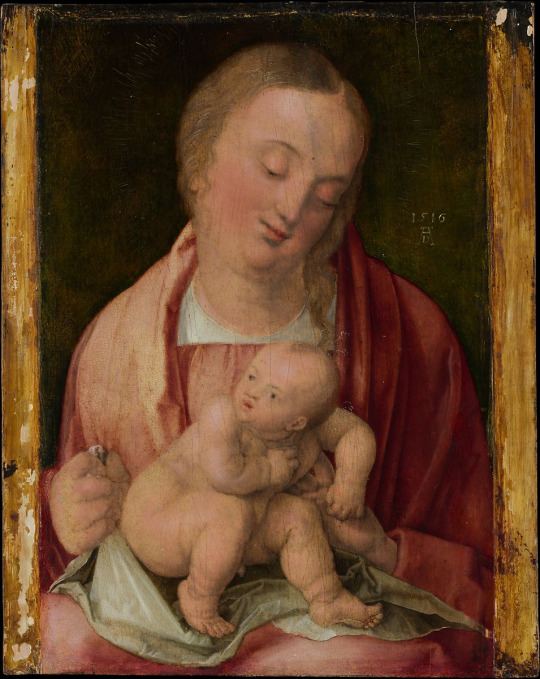
Albrecht Dürer, Virgin and Child. 1516.
Proportions: 0/5
Attitude: 5/5
Style: 2/5
This baby looks very normal. He’s chubby, proportioned well, but he’s got the expression of someone who just overhead someone else diss him from across the room. His alertness is a little unsettling. Final score: 2.3/5.
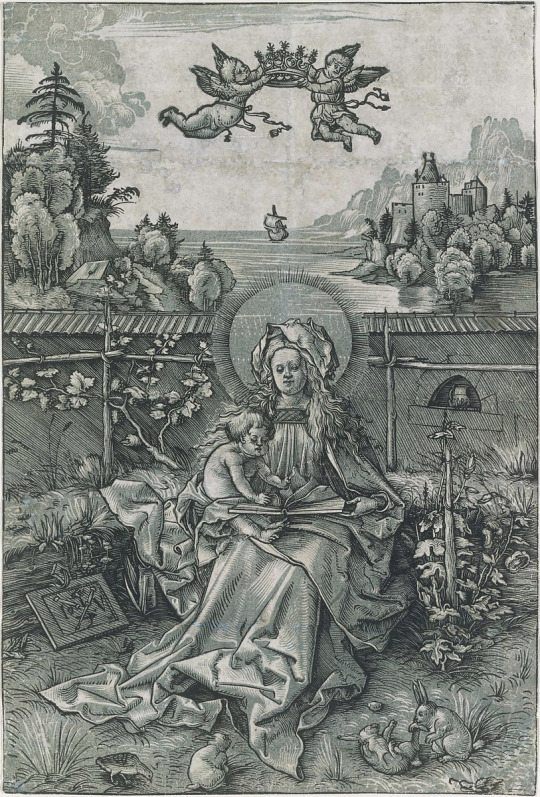
Hans Wechtlin, Virgin and Child. ca. 1510.
Proportions: 2/5
Attitude: 4/5
Style: 3/5
This baby features an exceptional page boy cut that suits his scholarly demeanor. I’m sure he could be more cursed, but I’d surely never like to see this sort of child in a library. Final score: 3/5

Joos van Cleve Netherlandish, Virgin and Child. ca 1525.
Proportions: 1/5
Attitude: 3/5
Style: 5/5
Maybe it’s the strangely mature reclining posture. Maybe it’s the little baby hand tightly gripping onto an orange despite the fact that this baby is very much asleep. But this baby overflows with some sort of latent psionic power that leaves me with a cold sweat. Despite his babyish body and calm face, this baby has got some great cursed energy. Final score: 3/5.
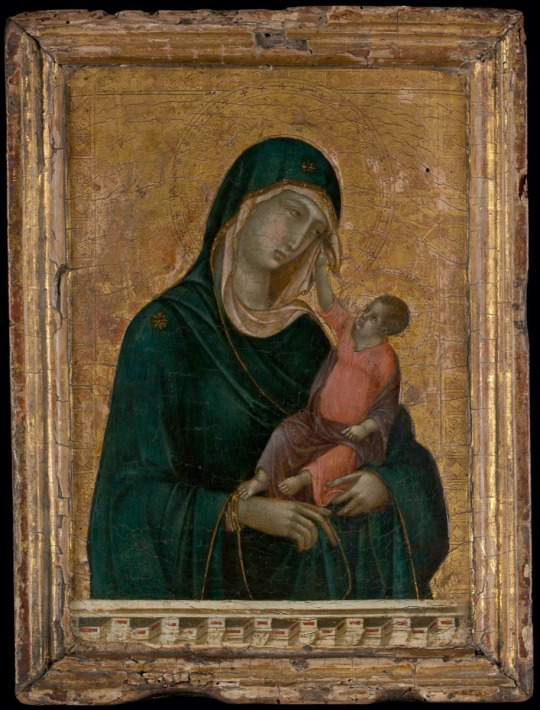
Duccio di Buoninsegna, Madonna and Child. 1290–1300 CE.
Proportions: 5/5
Attitude: 1/5
Style: 3/5
This baby has got those classic homunculus proportions, which complement his exceptionally grey skin tone. I would love to see what he’s capable of in a few years once he gains a neck and can access some foundation. Final score: 3/5.
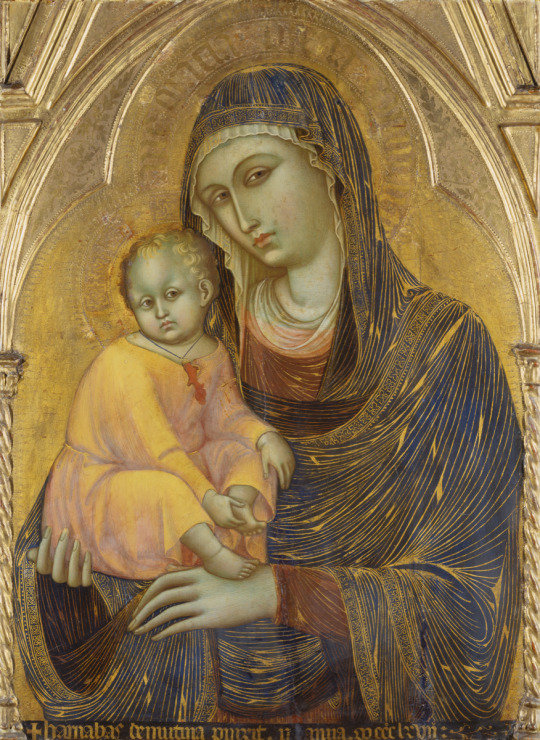
Barnaba da Modena, Madonna With Child. 1367.
Proportions: 2/5
Attitude: 1/5
Style: 3/5
This baby is attempting some attitude, but it’s toned down by his babylike features and neutral expression. He almost looks cute. He may be a winner in his own right, but this certainly isn’t the kind of cursed baby the crowds go wild for. Final score: 3.3/5. Next!
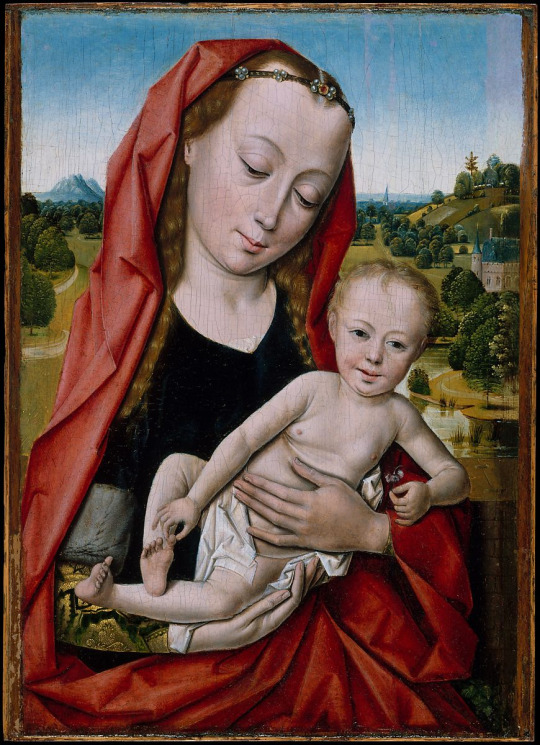
Workshop of Dieric Bouts, Virgin and Child. 1475–99.
Proportions: 5/5
Attitude: 3/5
Style: 2/5
This baby looks like the artist only realized he should be fat after he already drew in the skinny little body. He’s got the little baby fat dimples over a skinny legend frame. However, I do appreciate his little forehead curl. Final score: 3.3/5.

Master of Guillaume Lambert, Virgin and Child. ca. 1485.
Proportions: 4/5
Attitude: 3/5
Style: 3/5
He’s blue. And maybe a bit stoned?
Final score: 3.3/5

Master of the Life of Saint John the Baptist, Madonna and Child with Angels. Not dated.
Proportions: 5/5
Attitude: 5/5
Style: 2/5
By all accounts, this baby is an upgrade of Duccio di Buoninsegna’s. He may have lost that charming grey hue, but this guy excels in cursed long limbs and enough attitude to bat away his mother’s face. What looked almost loving in Buoninsegna’s baby’s posture looks upset and almost catty in this one. He’s got the diva energy, and we love to see it. Final score: 4/5
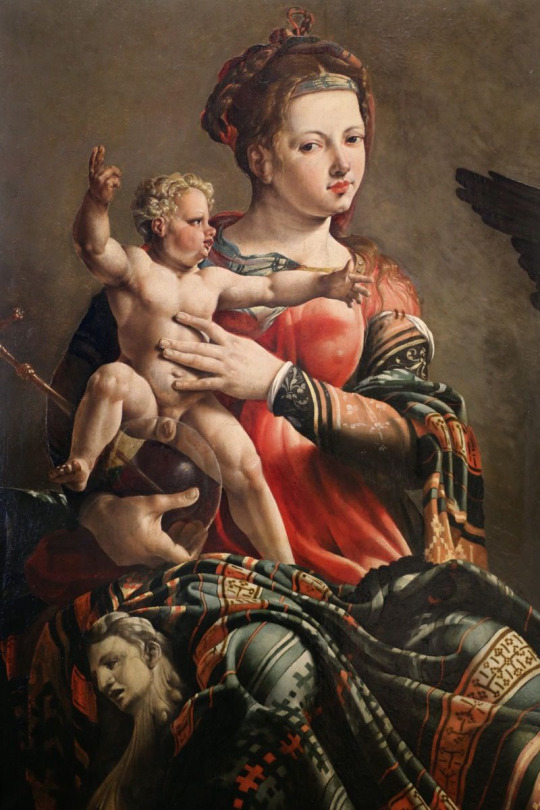
Maerten van Heemskerck, detail of St. Luke Painting the Virgin, 1532.
Proportions: 5/5
Attitude: 5/5
Style: 4/5
I want to give this baby a perfect 5/5 cursed rating right here right now. This baby has got everything: rippling muscles, a full head of perfectly waves hair, and an obvious predisposition for bloodlust. His mother is clearly holding him back from a battle he would most surely win. However, these chiseled bodies are a dime a dozen in early Renaissance art and that doesn’t exclude babies. As frighteningly ripped as this baby is, he’s not the only one, so I’m bumping him down on the style scale. Still, I’m giving this baby a near-perfect score because I’m almost sure he started - and ended - some European war. Final score: 4.7/5
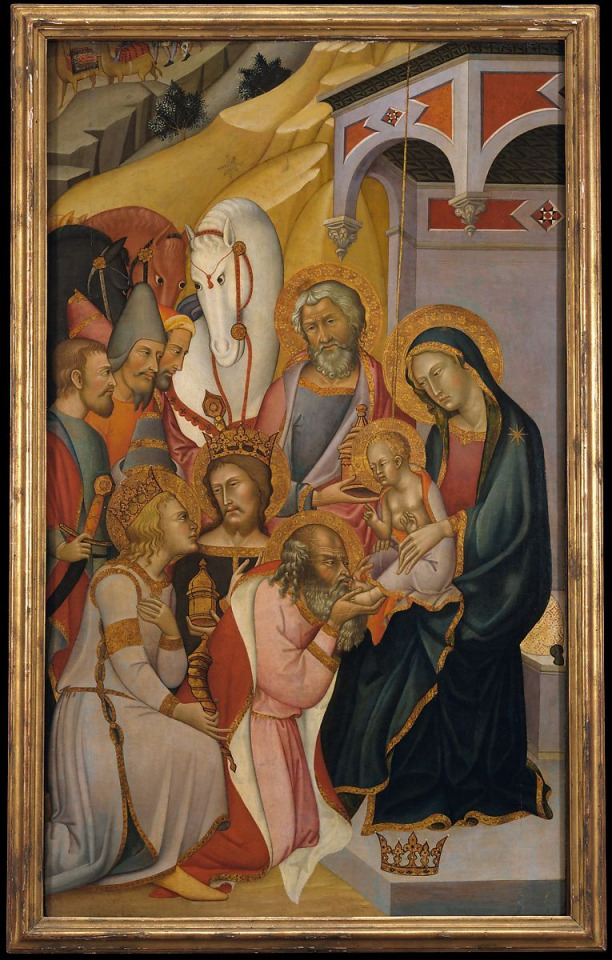
Bartolo di Fredi, The Adoration of the Magi. 1390.
Proportions: 4/5
Attitude: 5/5
Style: 5/5
Absolutely OBSESSED with what this baby’s bringing to the table. I hope he touches my forehead with his clammy little, fully articulated hand. Final score: 4.6/5
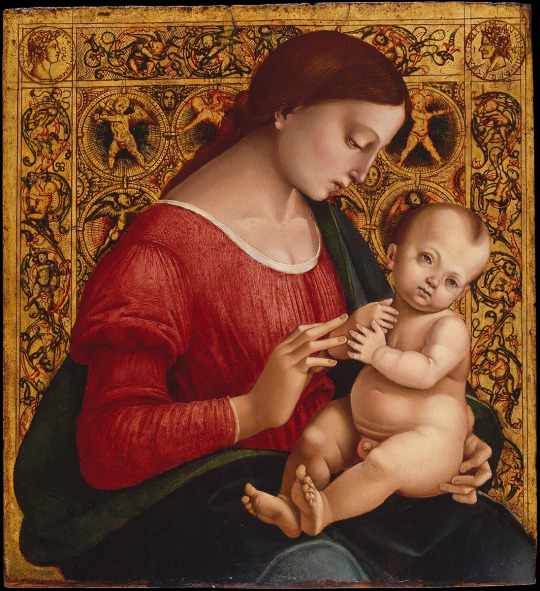
Luca Signorelli (Luca d'Egidio di Luca di Ventura), Madonna and Child. ca. 1505–7.
Proportions: 1/5
Attitude: 3/5
Style: 5/5
I genuinely feel disgusted by the energy this baby radiates. It’s not just cursed but filled with intentional malice. Please don’t stare at this baby for more than 3 seconds at a time. Final score: oh my god get it away from me i don’t care about totaling up the numbers this is a 5/5.
0 notes
Text
Avenue south residence4
Throughout history there has been a tradition of people coming together to build society. Whether forced labor or a labor of love, the world's most ambitious projects have been built through collaboration. When you think of architectural collaboration; images of Egyptian Pyramids, Roman Coliseums, and Indian Temples come to mind. These are civilization's designs of grandeur.
What collaborations in architecture continue to bring community together? Let's take a look at four architectural marvels throughout the world.
The Sistine Chapel: The Sistine Chapel in Vatican City, Rome. Ground breaking for this Chapel took place in 1473. The church was completed in 1481; eight years later. It was designed by Baccio Pontelli and constructed by Giovanni de Dolci under orders of Sixtus IV.
The Chapel is based on the temple of Solomon and the dimensions recorded in the Old Testament of the Bible. Although exact measurements cannot be made, surveys estimate it to be 40.9 meters (134 ft) long by 13.4 meters (44 ft) wide. The exterior of the building is plain. This was a common practice in Italy when the Chapel was built. The Chapel is three levels; a basement also with vaulted ceilings to support the Chapel, the Chapel, and a third story to house soldiers.
The exterior may be plain, but the interior of the Chapel is spectacular. It boasts of richly colored marble floors, barrel vaulted ceilings, and six arched windows on each side wall. This is just where the story begins. Pope Sixtus the IV commissioned several artists to decorate the Chapel. The collaboration produced 12 large frescoes telling the stories of the Bible. The Chapel's North side paintings tell about the life of Moses. On the South side they tell the life of Jesus. The artists who collaborated were; Domenico Ghirlandaio, Sandro Botticelli, Perugino, Cosimo Rosselli, Pinturicchio, Benedetto Ghirlandaio, Luca Signorelli and Bartolomeo della Gatta.
Then in 1505 Pope Julius II asked Michelangelo to paint the ceiling. Although Michelangelo didn't want to paint the ceiling, he agreed to the request. He began the paintings in 1508 and finished in 1511. The paintings told of the major stories of the Old Testament. In 1537 Pope Paul III ordered Michelangelo to paint another fresco above the alter. Michelangelo chose the subject of The Last Judgement. It was finished in 1541.
Due to the collaboration and incredible decoration of the Sistine Chapel it quickly brought many visitors. Giorgio Vasari, a famous historian of the times said hundreds of people came every day to stare and stare. Today 5 million tourists visit the Sistine Chapel every year, with peaks of around 20,000 visitors per day.
The Taj Mahal: One of the greatest works of collaboration in India is on a mausoleum built between the years of 1631 and 1648. The rest of the buildings, including a mosque, finished 5 years later. It is called Taj Mahal and is labeled one of the New Seven Wonders of the World. It holds status of a UNESCO World Heritage Site since 1983. National Geographic reports that 3 million tourists visit the mausoleum every year. It is located in Agra, a major city in the Indian state of Uttar Pradesh.
This monument was built as a tribute to the third wife of Mughal emperor Shah Jahan. His third wife, Mumtaz died in childbirth in 1631. Legend says she bound him to an oath to make her the most beautiful mausoleum ever built. He accomplished this amazing feat by employing thousands of artists and craftsman. They came from India, Persia, Turkey, Syria and other parts of the world. It is estimated that the labor numbered twenty thousand workers. The head architect is thought to be Ustad Ahmad Lahauri But the most known feature, the dome, was designed by Ismail Afandi; a Turkish architect. Other architects who worked on this project included Abd ul-Karim Ma'mur Khan and Makramat Khan.
The dome is the central focus of the entire complex. It is constructed of white marble and is a height of 35 meters (115 ft), the same as the length of the base. The top of the dome is decorated with a lotus design. There are four minarets, very tall towers. Each tower is more than 40 meters (130 ft) tall. The entire complex is symmetric. The only asymmetric point in the complex is where the tombs of Mumtaz and Shah Jahan are placed.
Unlike the Sistine Chapel, the outside of the tomb is exquisitely decorated. These decorations included carvings, stone inlays, painting, and stucco. Inside the mausoleum is inlaid with precious and semi-precious jewels. The interior walls are 25 meters high and are topped by an interior dome. This dome is decorated with sun motif. 8 arches within the domed define the space and each chamber wall is intricately designed. Decorations include refined calligraphy panel, intricate lapidary and dado bas-relief, and. These panels mimic the design elements which are seen right throughout the building's exterior.
The materials used to build the Taj Mahal were brought from Asia and India. It is said to have taken 1,000 elephants to carry the vast supplies. Wikipedia states that; "The translucent white marble was brought from Makrana, Rajasthan, the jasper from Punjab, jade and crystal Avenue south residence from China. The turquoise was from Tibet and the Lapis lazuli from Afghanistan, while the sapphire came from Sri Lanka and the carnelian from Arabia. In all, twenty-eight types of precious and semi-precious stones were inlaid into the white marble."
The Taj Mahal has suffered damage over the years but great attempts have been made to protect this ambitious creation. British viceroy Lord Curzon ordered a sweeping restoration project, which completed in 1908. Several times in history brick scaffolding was erected to mislead bomber pilots. The structural integrity has been of concern in the recent years. Regardless of this, Taj Mahal is one of the many wonders of this world. It is no wonder millions of people visit each year.
0 notes